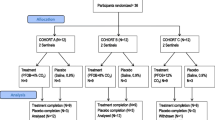Abstract
The therapeutic doses of β-stimulants in the treatment of bronchial asthma show wide variation among the drugs. In the present study, we tried to construct a system for prediction of the optimum clinical dose of β-stimulants as oral dosage forms and aerosols using the data from preclinical pharmacological studies and pharmacokinetic data in humans. Values of EC50 (drug concentration that gives the half-maximum bronchodilator effect) in the in vitro studies based on isolated trachea of guinea pigs were collected from the literature. The ratios of the EC50 value of each drug to that of isoproterenol were used as the indicator of in vitro pharmacological activity. There were significant correlations between the EC50 ratios and the oral dose or the maximum plasma concentration after single oral administration, but the correlation coefficients were relatively small (r<.9). On the other hand, a linear log-log relationship was observed between the EC50 ratio and the maximum plasma unbound concentration (Cumax) (slope=0.907, r=.955, p<0.001). In the case of aerosols, a good correlation was observed between the EC50 ratio and the dose (slope=0.770, r=.900, p<0.01). The predicted concentration of β-stimulants in the lung after aerosol administration tended to be higher than the Cumax after oral administration, suggesting the contribution of nonspecific binding in the lung tissue. These findings indicate the possibility of predicting the appropriate dose of β-stimulants based on the preclinical pharmacological data and the pharmacokinetic data in humans.
Similar content being viewed by others
References
Japan Pharmaceutical Reference. Japan Pharmaceutical, Medical & Dental Supply Exporters' Association, 1991.
T. Yanagawa, H. Higashino, N. Kajimoto, and A. Suzuki. Effects of fenoterol hydrobromide (Th1165a) and otherβ 2-receptor stimulants on the smooth muscle and the heart [in Japanese].Pharmacometrics 20:415–424 (1980).
R. Giles, J. C. Williams, and M. P. Kinkel. The bronchodilator and cardiac stimulant effects of Th1165a, salbutamol and isoproterenol.J. Pharmacol. Exp. Ther. 186:472–481 (1973).
I. Ohtsuki, J. Ishikoh, and Y. Noguchi. Bronchodilator effect and general pharmacology of pirbuterol hydrochloride [in Japanese].Yakuri to Chiryo 8:1–14 (1980).
Y. Yabuuchi. Theβ-adrenoceptor stimulant properties of OPC-2009 on guinea-pig isolated tracheal, right atrial and left atrial preparations.Br. J. Pharmacol. 61:513–521 (1977).
H. Ida. Pharmacology of formoterol, (αRS)-3-formamido-4-hydroxy-α-[[[(αRS)-p-methoxy-α-methylphenethyl]amino] methyl] benzylalcohol fumarate dihydrate (BD40A) [in Japanese].Pharmacometrics 21:201–210 (1981).
S. Kubo, Y. Kase, T. Miyata, G. Kito, and I. Uesaka. Pharmacological studies of 1-(o-chlorophenyl)-2-tert.-butylaminoethanol (C-78), a new bronchodilator.Arzneim. Forsch. 25:1028–1037 (1975).
Y. Gomi, H. Shirahase, and H. Funato. Effects of 1-(2-chloro-4-hydroxyphenyl)-t-butyl-aminoethanol (HOKU-81), a new bronchodilator, on isolated trachea and atria of guinea pig.Jap. J. Pharmacol. 29:515–524 (1979).
T. Murai, T. Maejima, K. Sanai, and E. Osada. Pharmacological studies of mabuterol, a new selectiveβ 2-stimulant.Arzneim. Forsch. 34:1633–1640 (1984).
T. Miyata, K. Takahama, A. Hasanat, K. Ikegami, K. Iwasaki, Y. Okano, and Y. Kase. Action of 4-amino-α-[(tert-butylamino)methyl]-3,5-dichlorobenzylalcohol hydrochloride (N-AB 365, clenbuterol) on the respiratory system [in Japanese].Folia Pharmacol. Japon. 74:573–588 (1978).
S. Uchida, E. Nagai, S. Ohno, M. Ohtsuka, and S. Kumada. Pharmacological effects of a new bronchodilator, Bricanyl [in Japanese].Kiso to Rinsho 6:770–777 (1972).
S. R. O'Donnell. Selectivity of clenbuterol (NAB365) in guinea-pig isolated tissues containingβ-adrenoceptors.Arch. Int. Pharmacodyn. 224:190–198 (1976).
F. Hatch, K. McKellop, G. Hansen, and T. MacGregor. Relative bioavailability of metaproterenol in humans utilizing a single dose, stable isotope approach.J. Pharm. Sci. 75:886–890 (1986).
D. A. Goldstein, Y. K. Tan, and S. J. Soldin. Pharmacokinetics and absolute bioavailability of salbutamol in healthy adult volunteers.Eur. J. Clin. Pharmacol. 32:631–634 (1987).
W. van den Berg, J. G. Leferink, R. A. A. Maes, J. K. Fokkens, J. Kreukniet, and P. L. B. Bruynzeel. The effects of oral and subcutaneous administration of terbutaline in asthmatic patients.Eur. J. Resp. Dis. 65:(Suppl 134):181–193 (1984).
M. Mohri and M. Harasawa. Pharmacodynamics of a new bronchodilator, pirbuterol, in Japanese [in Japanese].Shinryo to Shin-yaku 17:839–848 (1980).
I. Yamamoto, K. Iwata, and M. Nakashima. Pharmacokinetics of plasma and urine clenbuterol in man, rat, and rabbit.J. Pharmacobio-Dyn. 8:385–391 (1985).
D. J. Morgan, J. D. Paull, B. H. Richmond, E. Wilson-Evered, and S. P. Ziccone. Pharmacokinetics of intravenous and oral salbutamol and its sulphate conjugate,Br. J. Clin. Pharmacol. 22:587–593 (1986).
A. Ryrfeldt and C. H. Ramsay. Distribution of terbutaline.Eur. J. Resp. Dis. 65(Suppl 134):63–72 (1984).
T. Tanaka, K. Enogaki, K. Mase, K. Shimooka, and Y. Noguchi. Absorption, distribution, metabolism and excretion of pirbuterol hydrochloride [in Japanese].Yakuri to Chiryo 8:51–62 (1980).
S. P. Newman, D. Pavia, F. Moren, N. F. Sheahan, and S. W. Clarke. Deposition of pressurised aerosols in the human respiratory tract.Thorax 36:52–55 (1981).
T. Takahashi.The Atlas of the Human Body, KODANSHA, 1989, p. 34.
A. J. Clark. The reaction between acetylcholine and muscle cells.J. Physiol. 61:530–546 (1926).
H. Ishizuka, Y. Sawada, K. Ito, Y. Sugiyama, H. Suzuki, T. Iga, and M. Hanano. Nonlinear relationship between benzodiazepine receptor occupancy and glucose metabolic Ito response in the conscious mouse brainin vivo.J. Pharmacol. Exp. Ther. 251:362–367 (1989).
M. Sugiura, Y. Sawada, Y. Yamada, K. Nakamura, and T. Iga. Prediction of therapeutic doses of sulfonylureas based on receptor occupancy theory [in Japanese].Xenobio. Metab. Disp. 7:233–241 (1992).
Y. Yamada, Y. Sawada, R. Takayanagi, K. Ito, K. Nakamura, and T. Iga. Prediction of therapeutic doses of antipsychotic drugs as dopamine D2 receptor antagonists: Approach based on receptor occupancy theory [in Japanese].Xenobio. Metab. Disp. 8:247–261 (1993).
K. Ito, Y. Yamada, K. Nakamura, Y. Sawada, and T. Iga. Classification of benzodiazepine hypnotics in humans based on receptor occupancy theory.J. Pharmacokin. Biopharm. (in press).
G. Leclerc, B. Rouot, J. Velly, and J. Schwartz.β-Adrenergic receptor subtypes. InTowards Understanding Receptors, Elsevier, 1981, pp. 78–83.
H. T. Nilsson, B. G. Simonsson, and B. Strom. The fate of3H-terbutaline sulphate administered to man as an aerosol.Eur. J. Clin. Pharmacol. 10:1–7 (1976).
Author information
Authors and Affiliations
Rights and permissions
About this article
Cite this article
Ito, K., Yajima, N., Ohtani, H. et al. Prediction of the therapeutic dose for β-stimulants based on preclinical data: Application of oral dosage forms and aerosols to asthmatic patients. Journal of Pharmacokinetics and Biopharmaceutics 21, 133–144 (1993). https://doi.org/10.1007/BF01059766
Received:
Revised:
Published:
Issue Date:
DOI: https://doi.org/10.1007/BF01059766




